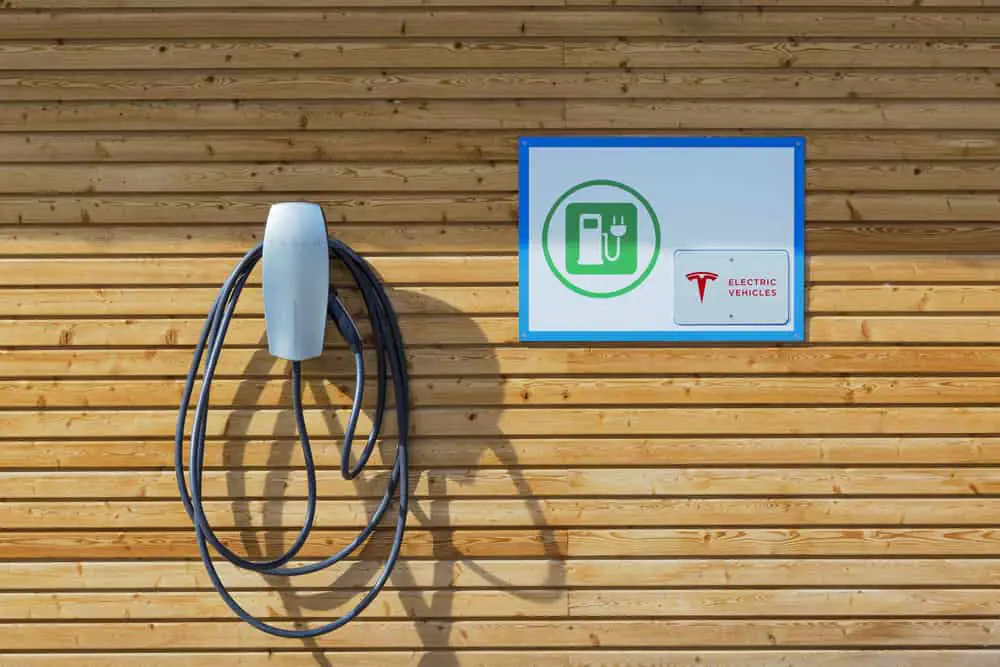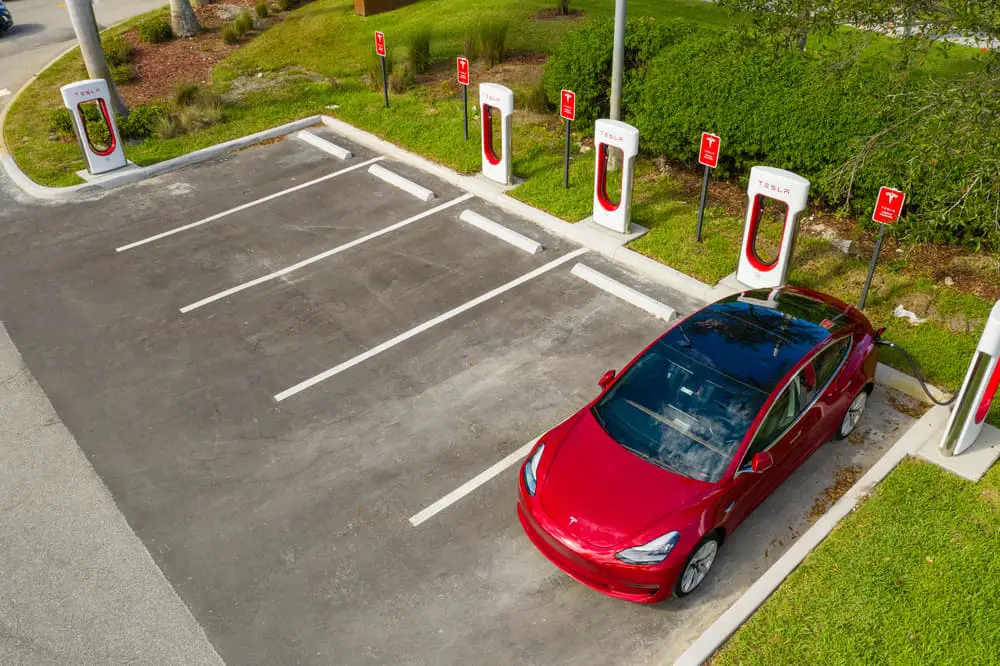As electric vehicles gain popularity, many EV owners might wonder if they could use a Tesla Wall Connector to charge other electric cars.
The Tesla Wall Connector is a popular high-powered charging solution for Tesla vehicles, allowing for faster home charging. Although designed primarily for Tesla vehicles, it naturally piques the interest of other EV owners who want to simplify their charging experience.
Understanding the various charging connectors and adaptors available for electric vehicles is crucial for an informed discussion on this topic. By understanding these options, we will be able to ascertain whether or not non-Tesla electric vehicles can benefit from the high-powered charging capabilities offered by the Tesla Wall Connector.
Tesla Wall Connector Overview
Basic Features
The Tesla Wall Connector is a high-powered charging solution for Tesla vehicles. It provides faster charging speeds compared to the standard mobile connector and is compatible with all Tesla models.
The Wall Connector can be installed indoors or outdoors, and it features a customizable power setting to accommodate various circuit-breaker setups.
Some other key features include:
- Up to 44 miles of range added per hour of charging
- Support for load balancing with multiple Wall Connectors
- 18 or 24 feet cable length options to suit different parking spaces
Price
The Tesla Wall Connector has a starting price of $500 (that may change when you read this). This cost does not include installation, which can vary depending on factors such as the complexity of the job and your local electrician’s rates.
Installation Process
To install a Tesla Wall Connector, you will need a professional electrician who is familiar with local codes and standards. The installation process typically involves the following steps:
- Choose an appropriate location for the Wall Connector, ideally near the vehicle’s parking spot.
- Mount the Wall Connector backplate to the wall, ensuring it is secure and level.
- Connect the high-voltage wiring to the unit following the labeled terminals.
- Configure the unit’s dip switches to match the desired circuit breaker rating.
- Attach the front cover and cable to complete the installation.
After installation, the electrician should test the Wall Connector for proper functionality before starting to charge your Tesla vehicle.
It’s important to note that the Tesla Wall Connector is primarily designed for Tesla vehicles. While it might technically be possible to charge other electric vehicles (EVs), some adaptations may be required, and compatibility is not guaranteed.
If you plan to charge a non-Tesla EV, it’s advisable to research your vehicle’s charging requirements and consult with an experienced electrician.
Charging Non-Tesla Electric Vehicles
Adapters and Compatibility
To charge non-Tesla electric vehicles (EVs) using a Tesla Wall Connector, you will need an adapter, such as a J1772 plug or CCS adapter, depending on your vehicle’s charging port. Adapters like the Lectron and TeslaTap are popular choices for converting Tesla charging connectors to universally accepted J1772 connectors.
Charging Speed and Efficiency
Non-Tesla EVs can be charged with a Tesla Wall Connector using adapters, but the charging speed may vary based on the electric car’s onboard charger capabilities. Typically, Tesla Wall Connectors provide a Level 2 charging output, which means most EVs can expect a charging rate of around 25-50 miles of range per hour.
However, it is essential to verify the compatibility of your EV’s charging rate and the adapter’s supported charging rate to ensure optimal charging speed and efficiency.
Third-Party Options
Several third-party Level 2 charging stations are suitable alternatives if you are specifically looking for versatility and compatibility with various electric cars. These chargers often come with built-in J1772 connectors or CCS compatibility, making them convenient for non-Tesla EV owners.
While the Tesla Wall Connector, coupled with an adapter, can also charge non-Tesla EVs, assessing your needs and thoroughly researching the best adapter and charger options for your vehicle is crucial for a seamless charging experience.
Tesla Charging Network
Supercharger Stations
Tesla has a vast charging network with Supercharger stations that are designed specifically for their electric vehicles. These stations provide fast recharging, typically taking about 30 minutes to charge a Tesla to a range of 170 miles. As of 2023, Tesla has built more than 20,000 Superchargers across the globe, with the majority in North America.
The Tesla Supercharger network is considered one of the most extensive and convenient charging systems for electric car owners. Users can find the nearest charging location using Tesla’s in-car map or the Tesla app, which also shows real-time availability.
Destination Chargers
In addition to Supercharger stations, Tesla has established a network of Destination Chargers. These chargers are installed at various commercial and public locations such as hotels, restaurants, and parking garages. Destination chargers are slower than Superchargers but still offer a convenient way to top off the battery while visiting a location or staying overnight.
Tesla provides support to businesses willing to install Tesla chargers, ensuring compatibility with their vehicles and managing the charging infrastructure.
Coverage in North America and Europe
Tesla’s Supercharger and Destination Charger networks have wide coverage, with a focus on the North American and European markets. In North America, Tesla owners can travel across the continent almost seamlessly, benefiting from Supercharger stations strategically placed along major highways.
European countries, like Germany and Norway, have also embraced Tesla’s charging network, making it easy to navigate the continent with minimal range anxiety. CEO Elon Musk’s ongoing efforts to increase charger availability ensure that Tesla owners can confidently drive through Europe and North America.
Overall, Tesla’s charging network is a significant selling point for the brand, as it offers unparalleled convenience and support for Tesla owners. With the expansion plans in place, Tesla is set to maintain its position as a leader in the electric vehicle market.
Advanced Tesla Wall Connector Features
The Tesla Wall Connector is a popular home charger for Tesla owners, providing fast and reliable charging for their
Industry Perspectives
Market Trends
The electric vehicle (EV) market has seen significant growth in recent years, with more people opting for eco-friendly transportation. This trend has led to an increase in demand for home charging stations, as they provide convenience to EV owners.
Industry leaders like Electrek have identified this shift as a major factor in the push for more accessible charging infrastructure.
- Electric vehicles: The rise in EV adoption can be attributed to advancements in technology, lower costs of ownership, and increased public awareness about their environmental benefits.
- Home charging stations: With the growth of the EV market, the need for convenient and accessible home charging solutions has risen. These stations allow owners to recharge their vehicles during off-peak hours and avoid long lines at public charging stations.
Tesla’s Impact
Tesla, as a key player in the EV market, has significantly influenced the industry trends relating to home charging station adoption. Their proprietary Tesla Wall Connector is designed to provide faster charging rates for their own vehicles. However, its compatibility with other electric vehicles has been a topic of concern for potential buyers.
While Tesla’s Wall Connector may not currently support other EV brands directly, there are adapters and third-party home charging stations available in the market that can cater to a variety of electric vehicles. The existence of these alternatives highlights the importance of versatile charging solutions within the industry.
In conclusion, the growing demand for electric vehicles has directly impacted the need for home charging stations. While Tesla’s Wall Connector may not charge other EVs directly, the industry has developed options to ensure compatibility and accessibility for all EV owners.



